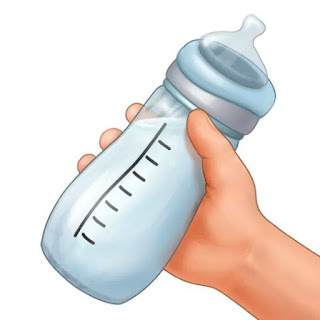When I was born a month early the Dr performed a c-section since I had not turned & was feet first. I was jaundiced. The doctor sent Mom & I home after 8 days. Then the doctor checked again & I went back 2 the hospital 4 another 6 days 2 go under the bilirubin light. When I was about 5 weeks old Mom noticed my lips turning blue when I ate. Back 2 the hospital 4 pneumonia since my lungs wouldn't clear up. The doctors started 2 notice that my head was growing too fast. The day after Easter in 1978 I spent another week in the hospital 4 tests. It was @ that time that the doctors told my Mom that I may have hydrocehalus. 1 doctor told Mom & Dad that I may never see or I may gain some vision. I had alot of medical problems when I was little. My parents were told that I would never walk or talk & that I should be put in an institution. I was taken home after 8 days was home 1 day & back under the light 4 6 more days.
I have low vision, am short, obese, on all hormone supplements, learning disabled, have sensory integration issues, and obsessive compulsive tendencies, and fight depression. I also have Nystagmus and Asthma.My diabetes is controlled by Insulin.
I also have De Morsier Syndrome or Septo Optic Dysplasia. According to www.madisonsfoundation.org/content/3/1/display.asp?did=512 De Morsier Syndrome/Septo Optic Dysplasia is an extremely rare developmental disability that can become apparent in infancy, childhood or even as late as adolescence. It is characterized by vision problems that are due to the faulty development of some of the eye structures and nerves, low levels of certain hormones and abnormalities of some brain structures. Abnormalities associated with this syndrome may be structural, functional or both. The hormonal problems associated with this condition are due to dysfunction of the hypothalamus and pituitary. The hypothalamus is the part of the brain that controls many of the regulatory functions of the body; such as body temperature, heart and breathing rates and blood pressure. It also sends signals to the pituitary gland, which is responsible for releasing many hormones. Though some children with this condition have normal intelligence, many other children exhibit developmental delays and a range of learning problems. Females and males are equally affected by De Morsier Syndrome. Some signs and symptoms of De Morsier Syndrome that I have are involuntary eye movements due to inability of the eye to focus, low muscle tone, hormonal abnormalities, short stature due to growth hormone deficiency, weight problems, and fluctuations in blood sugar. Unfortunately, the cause of this syndrome is not yet known.
Information about my conditions
Nystagmus is a vision condition in which the eyes make repetitive, uncontrolled movements, often resulting in reduced vision. These involuntary eye movements can occur from side to side, up and down, or in a circular pattern. As a result, both eyes are unable to hold steady on objects being viewed. Nystagmus may be accompanied by unusual head positions and head nodding in an attempt to compensate for the condition.
Nystagmus can be inherited and appear in early childhood or develop later in life due to an accident or illness. Generally, nystagmus is a symptom of some other underlying eye or medical problem. However, the exact cause is often unknown.
Persons with nystagmus may experience reduced visual acuity. They may also have problems with depth perception that can affect their balance and coordination. Nystagmus can be aggravated by fatigue and stress.
www.aoa.com American Optometric Association
Myofascial Pain Syndrome Myofascial pain syndrome is a chronic pain disorder. In myofascial pain syndrome, pressure on sensitive points in your muscles (trigger points) causes pain in seemingly unrelated parts of your body. This is called referred pain.
Myofascial pain syndrome typically occurs after a muscle has been contracted repetitively. This can be caused by repetitive motions used in jobs or hobbies or by stress-related muscle tension.
While nearly everyone has experienced muscle tension pain, the discomfort associated with myofascial pain syndrome persists or worsens. Treatment options for myofascial pain syndrome include physical therapy and trigger point injections. Pain medications and relaxation techniques also can help.
http://www.mayoclinic.org/diseases-conditions/myofascial-pain-syndrome/basics/definition/con-20033195
Fibromyalgia is a disorder characterized by widespread musculoskeletal pain accompanied by fatigue, sleep, memory and mood issues. Researchers believe that fibromyalgia amplifies painful sensations by affecting the way your brain processes pain signals.
Symptoms sometimes begin after a physical trauma, surgery, infection or significant psychological stress. In other cases, symptoms gradually accumulate over time with no single triggering event.
Women are much more likely to develop fibromyalgia than are men. Many people who have fibromyalgia also have tension headaches, temporomandibular joint (TMJ) disorders, irritable bowel syndrome, anxiety and depression.
While there is no cure for fibromyalgia, a variety of medications can help control symptoms. Exercise, relaxation and stress-reduction measures also may help.
http://www.mayoclinic.org/diseases-conditions/fibromyalgia/basics/definition/con-20019243
Growth hormone deficiency (GHD) is a medical condition, caused by problems arising in the pituitary gland, in which the body does not produce enough growth hormone(GH). Growth hormone, also calledsomatropin, is a polypeptide hormone which stimulates growth and cell reproduction.
Growth hormone deficiency has a variety of different negative effects at different ages; for example, in newborn infants, the primary manifestations may be hypoglycemia ormicropenis, while in later infancy and childhood, growth failure is more likely. Deficiency in adults is rare, but may feature diminished lean body mass, poor bone density, and a number of physical and psychological symptoms. Psychological symptoms include poor memory, social withdrawal, and depression, while physical symptoms may include loss of strength, stamina, and musculature. Other hormonal or glandular disorders frequently coincide with diminished growth hormone production.
The most common cause of GHD (representing two-thirds of cases) are pituitary and parasellar tumors. The origin of adult GHD may be congenital or acquired. Of those adult GHD that are acquired, roughly 15% are idiopathic, 50% are from pituitary tumors, 20% from extrapituitary tumors, and 5% from infiltrative or inflammatory lesions.
GH deficiency can be treated through growth hormone replacement, injections of growth hormone, or radiation or surgical treatment of tumors.
https://en.m.wikipedia.org/wiki/Growth_hormone_deficiency
Hypothyroidism is a condition in which the body lacks sufficient thyroid hormone. Since the main purpose of thyroid hormone is to "run the body's metabolism," it is understandable that people with this condition will have symptoms associated with a slow metabolism. The estimates vary, but approximately 10 million Americans have this common medical condition. In fact, as many as 10% of women may have some degree of thyroid hormone deficiency. Hypothyroidism is more common than you would believe, and millions of people are currently hypothyroid and don't know it. For an overview of how thyroid hormone is produced and how its production is regulated, check out our thyroid hormone production page.
http://www.endocrineweb.com/conditions/thyroid/hypothyroidism-too-little-thyroid-hormone
Chiari malformations (CMs) are structural defects in the cerebellum, the part of the brain that controls balance. Normally the cerebellum and parts of the brain stem sit in an indented space at the lower rear of the skull, above the foramen magnum (a funnel-like opening to the spinal canal). When part of the cerebellum is located below the foramen magnum, it is called a Chiari malformation.
CMs may develop when the bony space is smaller than normal, causing the cerebellum and brain stem to be pushed downward into the foramen magnum and into the upper spinal canal. The resulting pressure on the cerebellum and brain stem may affect functions controlled by these areas and block the flow of cerebrospinal fluid (CSF)— the clear liquid that surrounds and cushions the brain and spinal cord—to and from the brain.
http://www.ninds.nih.gov/disorders/chiari/detail_chiari.htm#3087_1
Obsessive–compulsive disorder (OCD) is amental disorder where people feel the need to check things repeatedly, perform certain routines repeatedly, or have certain thoughts repeatedly. People are unable to control either the thoughts or the activities. Common activities include hand washing, counting of things, and checking to see if a door is locked. Some may have difficulty throwing things out. These activities occur to such a degree that the person's daily life is negatively affected.[1]Often they take up more than an hour a day.[2]Most adults realize that the behaviors do not make sense.[1]The condition is associated with tics, anxiety disorder, and an increased risk of suicide.[2][3]
The cause is unknown.[1]There appears to be some genetic components with both identical twins more often affected than both non-identical twins. Risk factors include a history of child abuse or other stress inducing event. Some cases have been documented to occur following infections. The diagnosis is based on the symptoms and requires ruling out other drug related or medical causes.[2] Rating scales such as the Yale–Brown Obsessive Compulsive Scale can be used to assess the severity.[4]Other disorders with similar symptoms include: anxiety disorder, major depressive disorder, eating disorders, tic disorders, and obsessive–compulsive personality disorder.[2]
Treatment for OCD involves the use ofbehavioral therapy and sometimes selective serotonin reuptake inhibitors (SSRIs). The type of behavior therapy used involves increasing exposure to what causes the problems while not allowing the repetitive behavior to occur.[5]Atypical antipsychoticssuch as quetiapine may be useful when used in addition to an SSRI in treatment-resistant cases but are associated with an increased risk of side effects.[6]Without treatment the condition often lasts decades.[2]
Obsessive–compulsive disorder affects about 2.3% of people at some point in their life.[7]Rates during a given year are about 1.2% and it occurs worldwide. [2]It is unusual for symptoms to begin after the age of thirty-five and half of people develop problems before twenty.[1][2]Males and females are affected about equally.[1]In English the phraseobsessive–compulsive is often used in an informal manner unrelated to OCD to describe someone who is excessively meticulous,perfectionistic, absorbed, or otherwise fixated.[8]
https://en.m.wikipedia.org/wiki/Obsessive%E2%80%93compulsive_disorder
Sensory integration issues a condition in which the brain has trouble receiving and responding to information that comes in through the senses.
The condition used to be called sensory integration dysfunction.
http://www.webmd.com/children/sensory-processing-disorder
Diabetes insipidus (die-uh-BEE-teze in-SIP-uh-dus) is an uncommon disorder characterized by intense thirst, despite the drinking of fluids (polydipsia), and the excretion of large amounts of urine (polyuria). In most cases, it's the result of your body not properly producing, storing or releasing a key hormone, but diabetes insipidus can also occur when your kidneys are unable to respond properly to that hormone. Rarely, diabetes insipidus can occur during pregnancy (gestational diabetes insipidus).
You may assume diabetes insipidus and diabetes mellitus — the more common form of diabetes involving blood sugar — are related. Although the disorders share a name and have some common signs, diabetes mellitus (type 1 and type 2) and diabetes insipidus are unrelated.
Treatments are available to relieve your thirst and normalize your urine output.
http://www.mayoclinic.org/diseases-conditions/diabetes-insipidus/basics/definition/con-20026841
Type 2 Diabetes is a lifelong (chronic) disease in which there is a high level of sugar (glucose) in the blood. Type 2 diabetes is the most common form of diabetes.
https://www.nlm.nih.gov/medlineplus/ency/article/000313.htm



















































